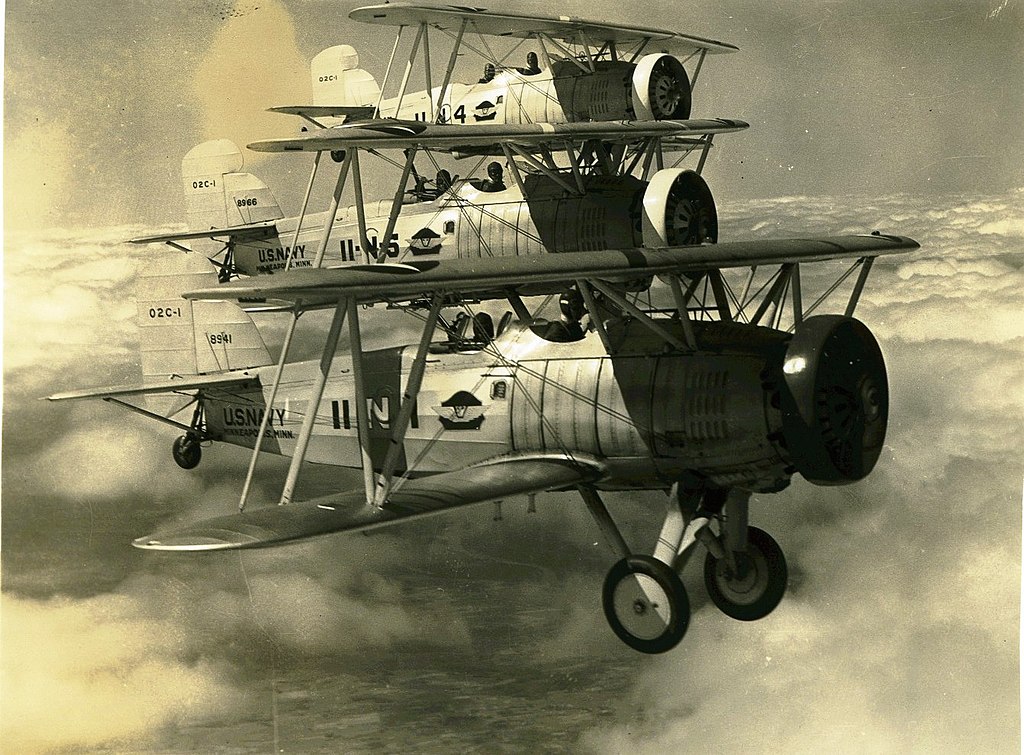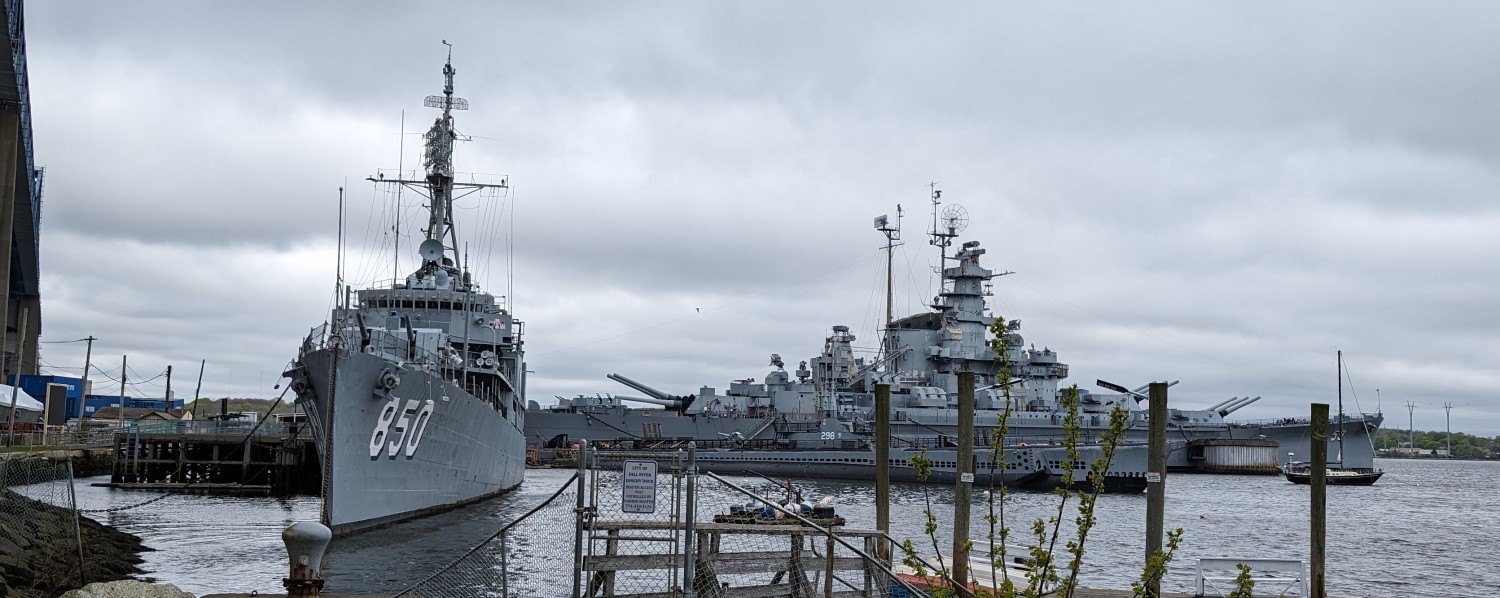Throughout WWII, the single most effective way of delivering high explosives to ships was dive bombing. This is exactly what it sounds like, the aircraft diving towards the target before releasing the bomb, the performing a high-G pullout to avoid following the bomb into the target. It was originally developed during WWI to attack land targets, as pilots realized that it allowed them to place bombs far more accurately, although the fragile aircraft of the time were limited to fairly shallow dives.

Curtiss F8Cs, the first US dive bomber
Dive bombing nearly died off in the years immediately after WWI, abandoned in the enthusiasm of airpower advocates for level bombing, but it was adopted by the US Marines and Navy in the late 20s, using fighters equipped with light bombs for support in ground fighting. Initially, they used fairly shallow dives, but the target had a tendency to disappear under the nose of the aircraft, and it was soon realized that steeper dives not only solved this problem and improved accuracy, but also were far harder to defend against. The plunging dive bombers were generally difficult to see before they began their dives, and once in a dive, the rapid change in range meant that heavy AA guns were ineffective, while lighter AA weapons had only a narrow window to work against the diving aircraft. The basic technique they used would remain standard throughout the dive bomber's life: approach at 10,000' or so, then push over into a steep dive, 70° or more. As he dove, he would aim at the target attempting to compensate for wind and the movement of the ship. The bomb would be dropped during the dive, and the pilot would then pull out and fly away at high speed and relatively low altitude. What altitude the pull-out was done at varied, with early tests taking place at 1000' or so, although later aircraft had to do so at greater altitude to avoid plowing into the ground. The pullout itself would often subject pilot and plane to 6G or more, enough to make the pilot's vision gray out, which generally limited the tactic to smaller aircraft.
Read more...






Recent Comments